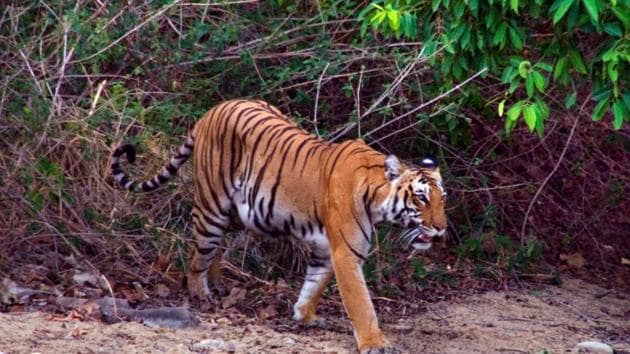In a first, India and Nepal set to count their tigers at same time
For the first time, the exhaustive exercise of the annual tiger estimation in India will be done in coordination with Nepal which shares forest corridors used by wild animals, including the big cat, to traverse the two countries
For the first time, the exhaustive exercise of the annual tiger estimation in India will be done in coordination with Nepal which shares forest corridors used by wild animals, including the big cat, to traverse
the two countries.

A resolution was passed during a recent meeting with Nepalese officials during which both the countries decided to go for estimate of tiger numbers simultaneously. Trans-boundary cooperation to curb wildlife crime was also discussed wherein joint patrolling, routine meetings and exchange of information were pressed upon.
In India, yearly monitoring of tiger reserves is done through Phase IV analysis followed by a rigorous estimation exercise across states in every four years. Nepal has been conducting annual monitoring of tigers based on the protocols of the National Tiger Conservation Authority (NTCA), which is the apex body on tiger conservation in India.
The neighbouring country has roughly about 200 tigers as compared to India that reported 2,226 tigers during the last estimation in 2014-15.
The idea of this joint estimation is to synchronise monitoring of big cats on border areas. Uttarakhand, Uttar Pradesh and Bihar are among the five states that share border with Nepal. Parts of these three states fall under the Terai Arc Landscape which is home and corridors to the tiger and other large mammals.
A World Wide Fund for Nature (WWF) initiative revealed there were about 11 tigers that reached Nepal boosting the population of the specie which was under severe poaching threat. “We share common boundary and this comprehensive estimation will help both countries in estimating tiger numbers especially on border areas,” Wildlife Institute of India scientist Bivash Pandav told Hindustan Times. Pandav was mentoring Nepalese officials in conducting the tiger monitoring and was a part of the meetings.
The joint exercise will be done at Dudhwa National Park of Uttar Pradesh that extends till Kishanpur Wildlife Sanctuary and Katerniaghat Wildlife Sanctuary in Nepal. Similarly, the exercise will be done in Chitwan National Park in Nepal and Valmiki Tiger Reserve in Bihar, Pilibhit Tiger Reserve in UP and Shukhlaphanta in Nepal. In Uttarakhand, the boundary is shared at forest divisions of Pithoragarh and Campawat.
The NTCA is now working on finalising the module and dates with the Nepalese officials after consultation with the Uttarakhand forest department. “The resolution was passed and now we will work on the module which will be followed along the border,” Nishant Verma, DIG of NTCA, who attended the meeting, said.




